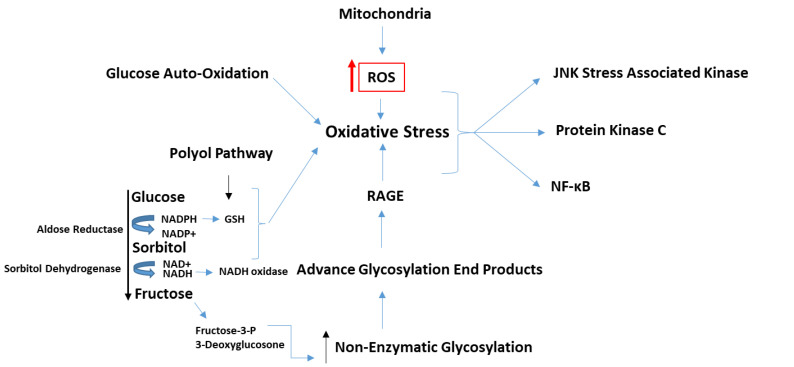Figure 3.
Hyperglycemia induced ‘oxidative-stress’ and its implications. A significant amount of glucose can be shunted via the polyol path, which can lead to oxidative stress through several known signaling pathways affecting vital cellular processes (such as overutilization of NADPH by AR that causes an inability to regenerate GSH and thus decreases the overall antioxidant capacity of the cell). Similarly, SDH results in a buildup of NADH, a substrate for NADH oxidase which produces ROS. Fructose from the polyol path is metabolized to Fructose-3-P, and 3-Deoxyglucasone; both are potent non enzymatic glycation agents. Additionally, glucose auto-oxidation generates H2O2, O2-, and OH−, and thus contributes to oxidative stress in cells. Furthermore, binding of AGEs to RAGE is known to generate intracellular stress.

